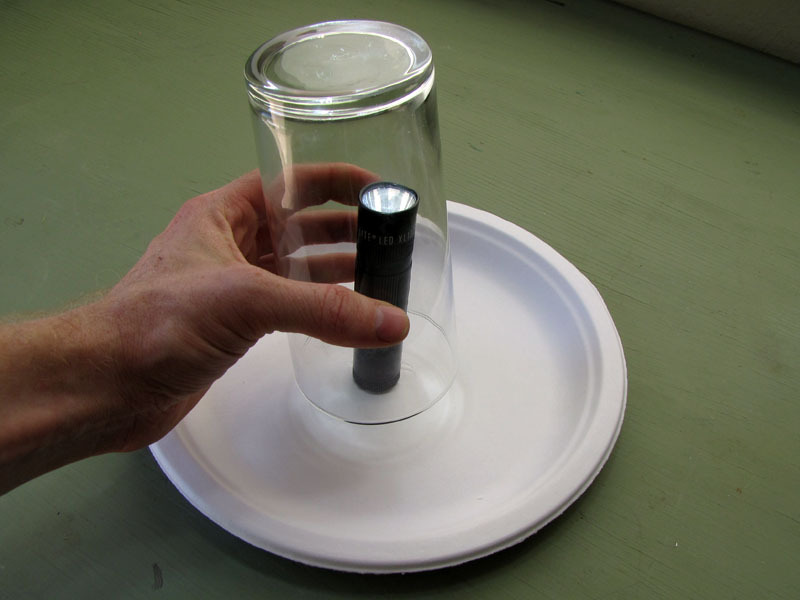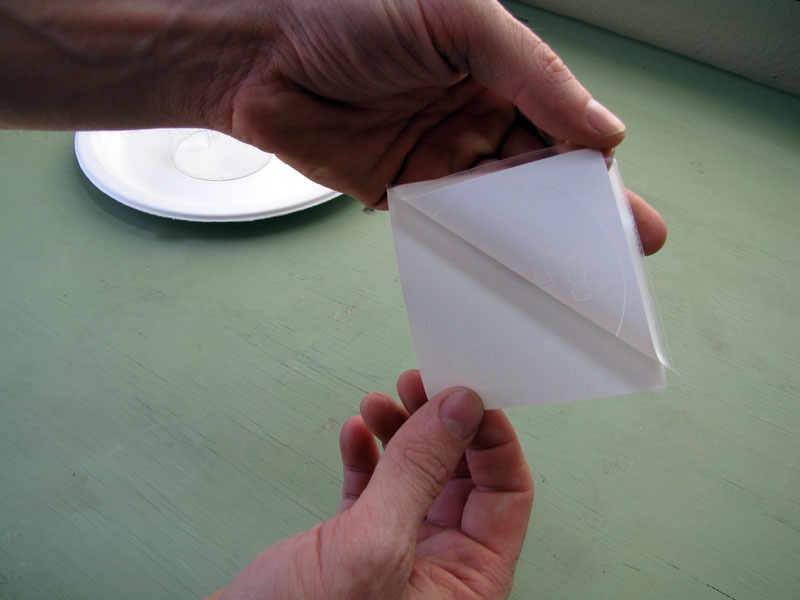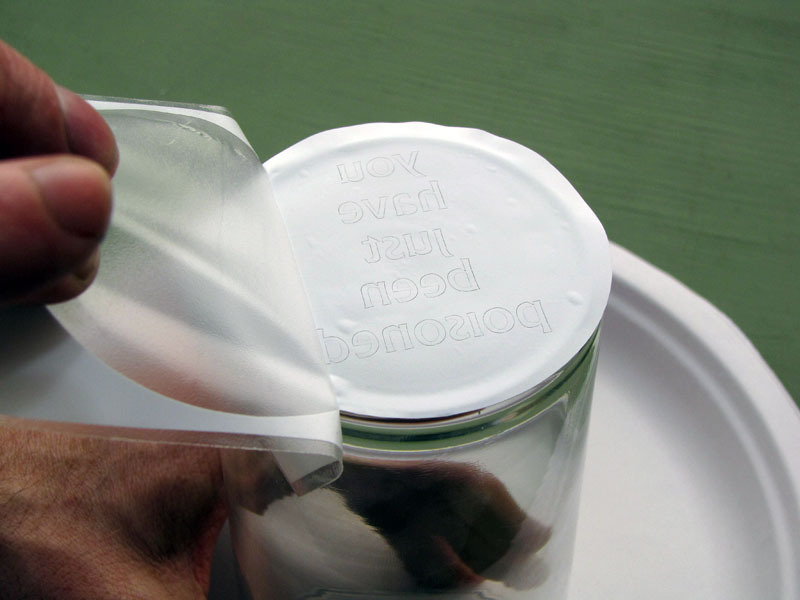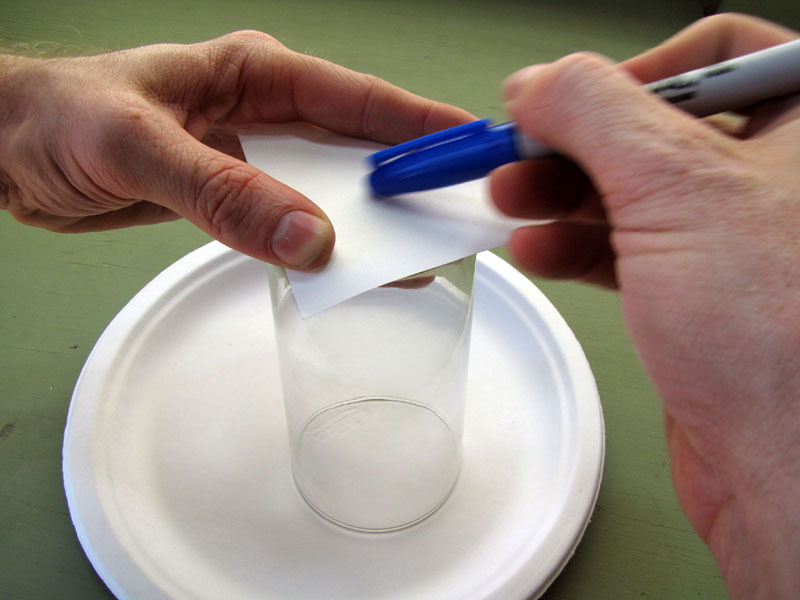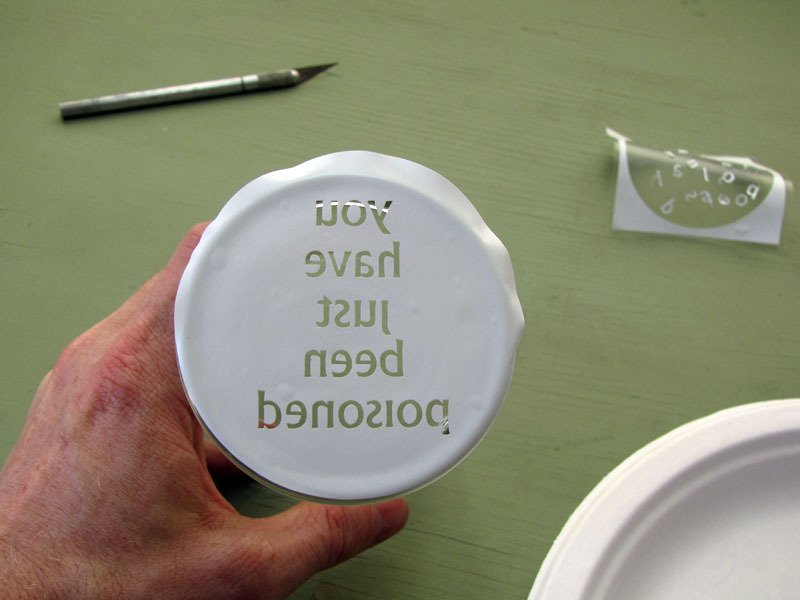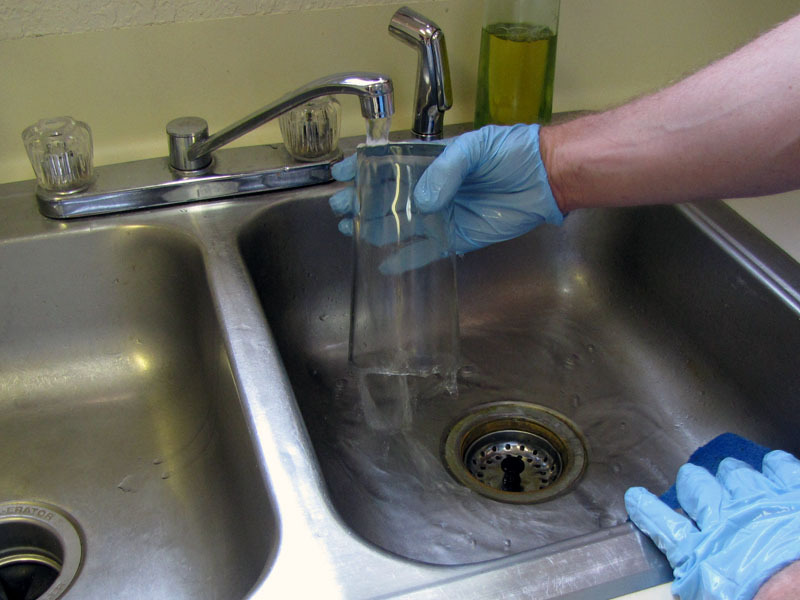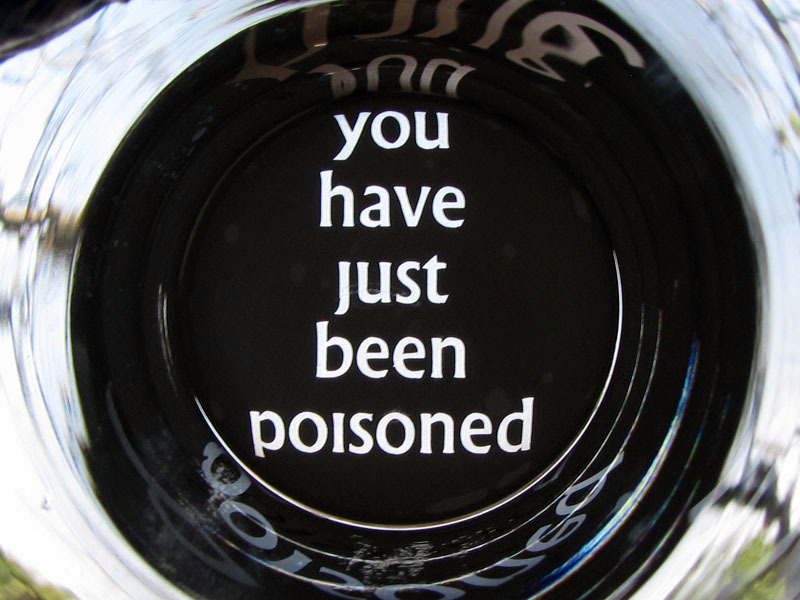Fans of Patrick McGoohan’s classic BBC spy series The Prisoner will recognize this gimmick from Episode 15, “The Girl Who Was Death.” This is a pint glass with words etched on the bottom (in authentic “Village” font) that appear line by line as the liquid is imbibed.
Update: Got lots of folks asking to buy these, and I finally managed to get a couple dozen made and posted in my Etsy shop. Thanks for all your positive comments.
Update 2: Etchworld has started carrying these stencils in their online catalog, so those of you who want to DIY should now have a much easier time sourcing the vinyl. Thanks, folks!




